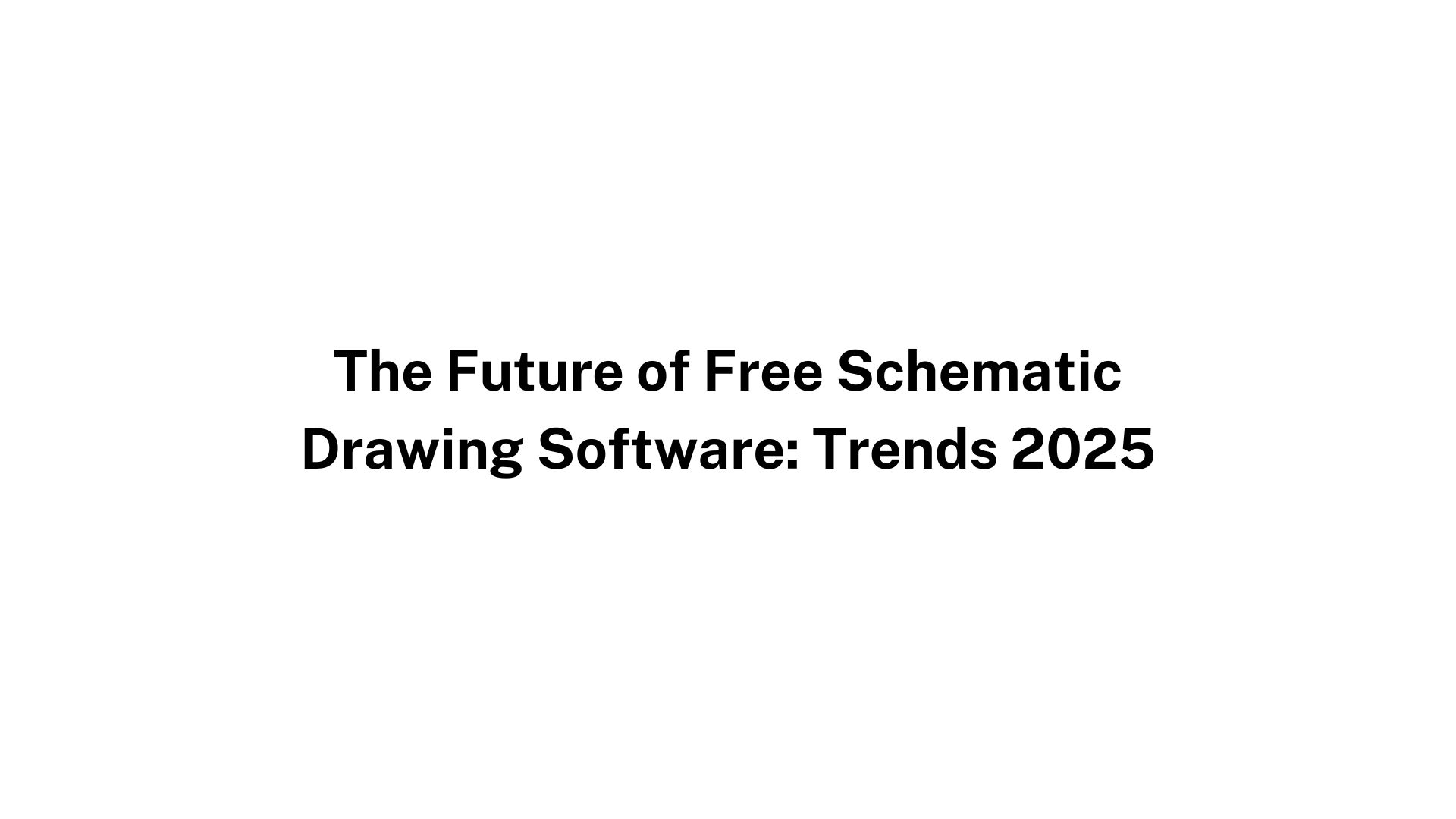
In today’s fast-evolving technological landscape, schematic drawing software has become a critical tool for engineers, designers, AV professionals, and hobbyists alike. The ability to visualize and document complex systems through clear and accurate schematics is indispensable. Thanks to the rise of free schematic drawing software, these capabilities are now accessible to a broader audience without the traditional high cost barriers.
The question on many minds is: what does the future hold for free schematic drawing software? Which emerging trends and innovations will redefine how we design, collaborate, and manage schematic projects? And how will the best schematic drawing software free offerings evolve to meet the demands of increasingly complex systems, user expectations, and technological breakthroughs?
This blog explores the future of free schematic drawing software in depth — identifying key trends, technological advances, and user-centric innovations that will shape the landscape in the coming years.
The Current State of Free Schematic Drawing Software
Before delving into future trends, it’s important to understand where free schematic drawing software currently stands. Today, users have access to a variety of tools that offer:
-
Basic and advanced symbol libraries
-
Drag-and-drop interfaces
-
Cloud-based collaboration
-
Integration with other design tools
-
Export and import capabilities
Despite their accessibility, free schematic software often faces limitations in functionality, device library scope, or collaboration features compared to paid counterparts. However, continuous innovation is rapidly closing this gap.
Trend 1: AI-Powered Design Assistance
Artificial Intelligence (AI) is transforming software across all domains, and schematic drawing is no exception. The future of best schematic drawing software free will likely include:
-
Automated symbol recognition: AI that identifies hand-drawn sketches or imported images and converts them into digital schematic symbols.
-
Smart error detection: Early warnings about inconsistent connections, missing components, or design conflicts.
-
Design optimization suggestions: AI-driven recommendations for more efficient layouts, signal flow, or space utilization.
These features will reduce user errors and speed up the design process, especially for newcomers and complex projects.
Trend 2: Cloud-Native and Real-Time Collaboration
Collaboration is critical for schematic projects involving multiple engineers or departments. The future software landscape will prioritize:
-
Seamless real-time multi-user editing, allowing teams to work simultaneously without version conflicts.
-
Cloud-based storage and version control to maintain project integrity and enable easy access from anywhere.
-
Integration with communication platforms like Slack or Microsoft Teams for instant feedback and approvals.
This trend democratizes schematic design, enabling remote teams to collaborate effectively.
Trend 3: Open-Source and Community-Driven Development
Open-source schematic software projects are gaining momentum due to their:
-
Flexibility and customization potential
-
Transparency and security
-
Rapid innovation fueled by active communities
The best schematic drawing software free options will harness this movement, offering users not only free tools but also the ability to contribute, extend features, and tailor software to their needs.
Trend 4: Enhanced Integration with IoT and Smart Systems
The Internet of Things (IoT) and smart building technologies are increasingly common in AV, industrial automation, and home applications. Future schematic tools will:
-
Incorporate specialized libraries for IoT devices, sensors, and controllers.
-
Allow simulation of real-world signal flows and device interactions.
-
Provide interfaces to link schematic data directly with building management systems (BMS) or control platforms.
This integration helps designers visualize entire ecosystems rather than isolated circuits.
Trend 5: Improved User Experience and Accessibility
User experience (UX) improvements will focus on:
-
Intuitive, touch-friendly interfaces for tablets and mobile devices
-
Voice-controlled commands and navigation
-
Tutorials, wizards, and AI-guided workflows for beginners
By lowering the learning curve, the best schematic drawing software free tools will empower a broader audience, from students to seasoned professionals.
Trend 6: Advanced Visualization and 3D Modeling
While traditional schematics are 2D, future software will increasingly support:
-
3D schematic visualization to better represent complex wiring and component placement.
-
Virtual and augmented reality (VR/AR) interfaces for immersive design reviews and troubleshooting.
These features will bridge the gap between conceptual design and physical installation.
Trend 7: Automation and Integration with Project Management Tools
Schematic drawing software will become part of a broader ecosystem involving:
-
Automatic generation of Bills of Materials (BOM) linked to procurement systems
-
Scheduling and workflow integration to track design, approval, and installation phases
-
Real-time updates flowing between schematic software and project management platforms
This connectivity streamlines workflows and reduces administrative overhead.
9. Challenges Ahead and Considerations
Despite promising advances, challenges remain:
-
Balancing feature richness with simplicity in free tools
-
Ensuring data privacy and cybersecurity in cloud-based environments
-
Managing the learning curve for AI and advanced features
-
Maintaining interoperability with legacy software and hardware
Future software developers and users must navigate these hurdles thoughtfully.
10. The Role of XTEN-AV and Other Innovators
Innovative companies like XTEN-AV are pioneering AI-powered schematic design and collaboration tools that hint at the future of free and paid schematic software alike. Their platforms exemplify trends like AI assistance, cloud collaboration, and integration with AV and IT ecosystems, setting new standards in usability and functionality.
Conclusion
The future of free schematic drawing software is bright, driven by rapid advances in AI, cloud computing, and user-centric design. As these trends converge, the best schematic drawing software free offerings will provide unprecedented capabilities — empowering users to create smarter, more accurate, and highly collaborative schematics for a variety of industries.
For professionals and hobbyists alike, staying informed about these innovations and embracing the right tools will be key to unlocking the full potential of schematic design in the years ahead.